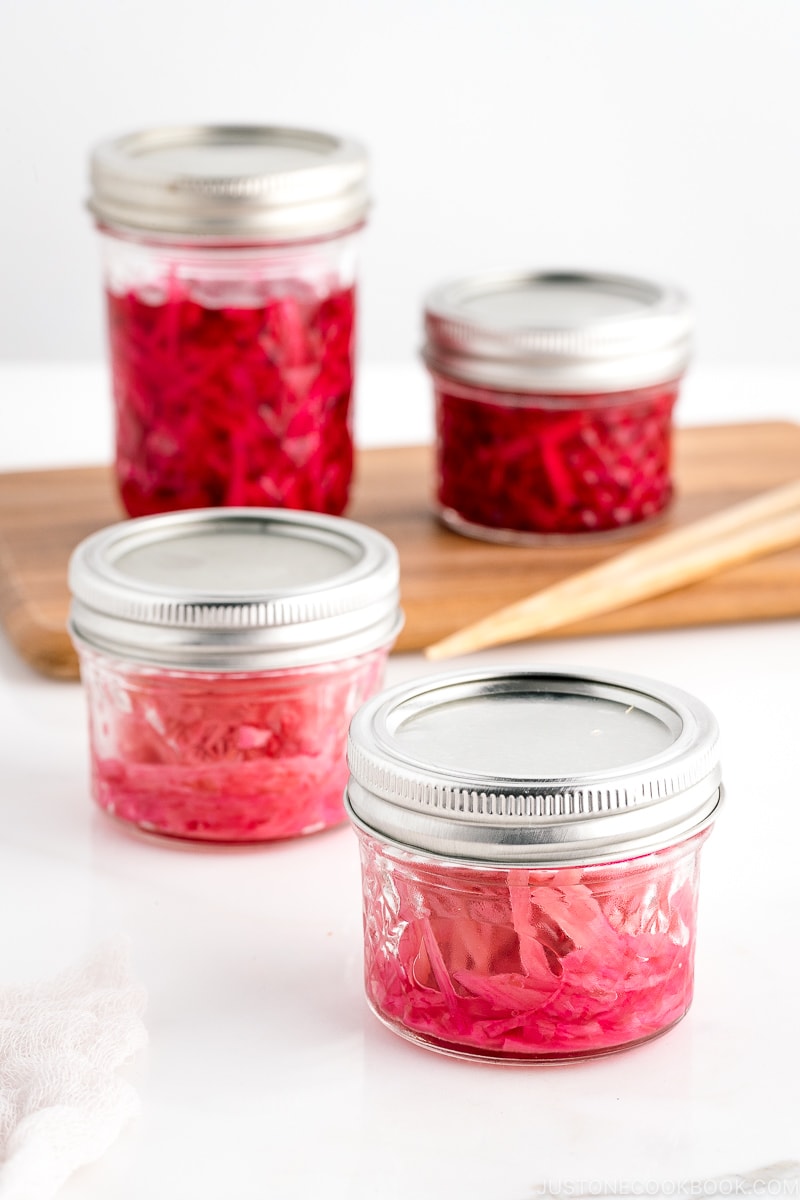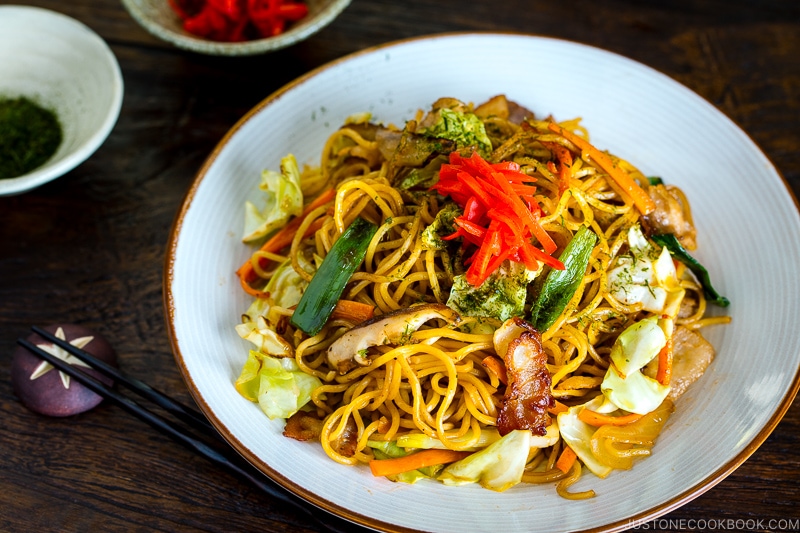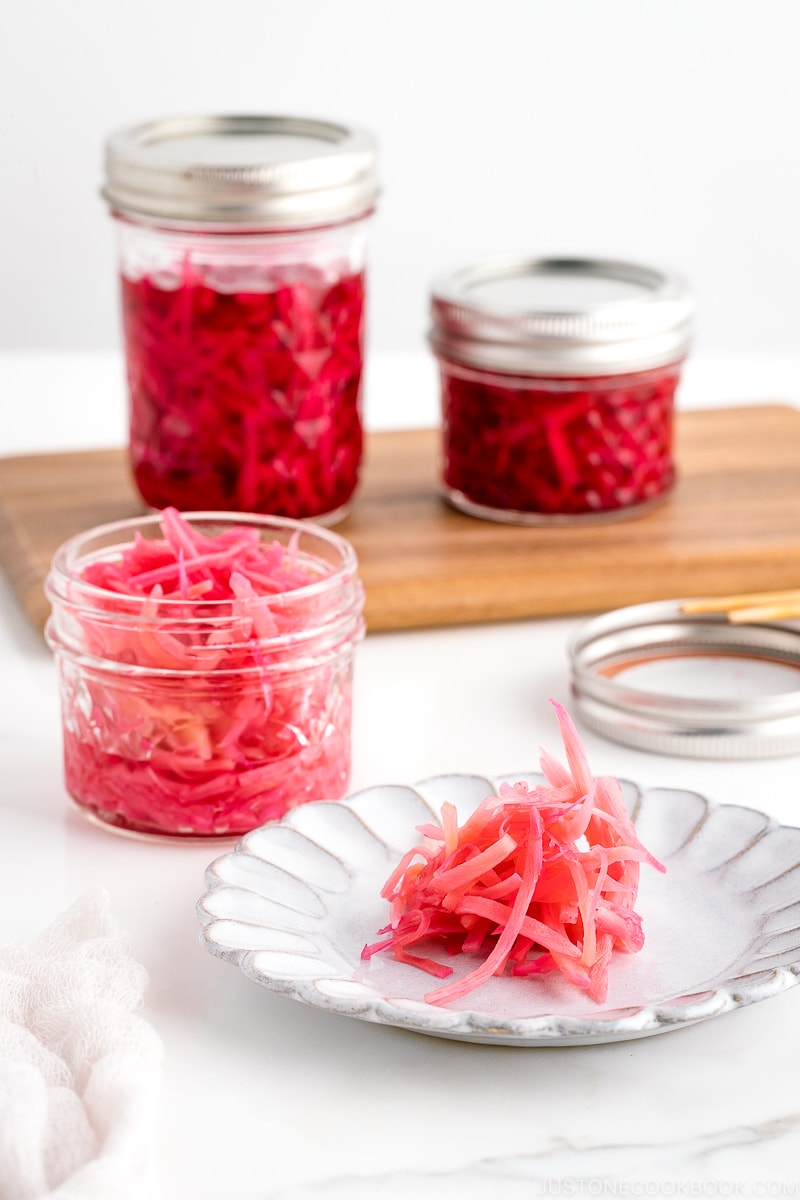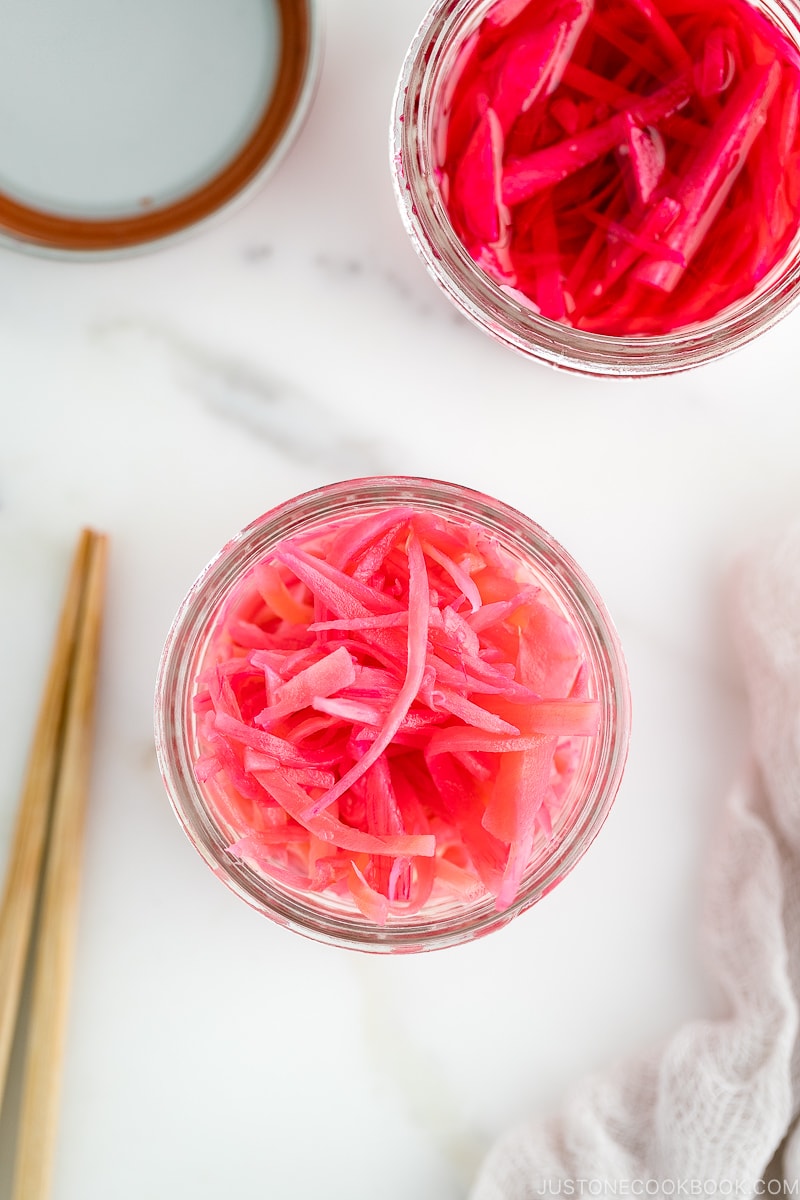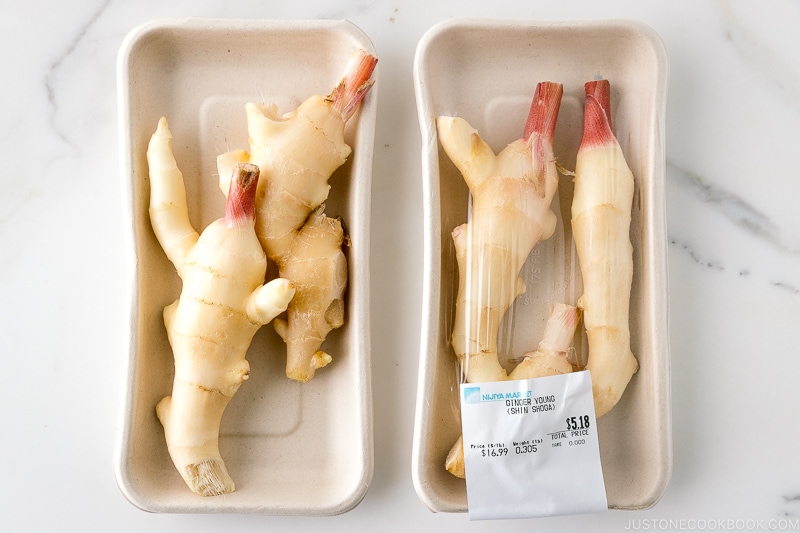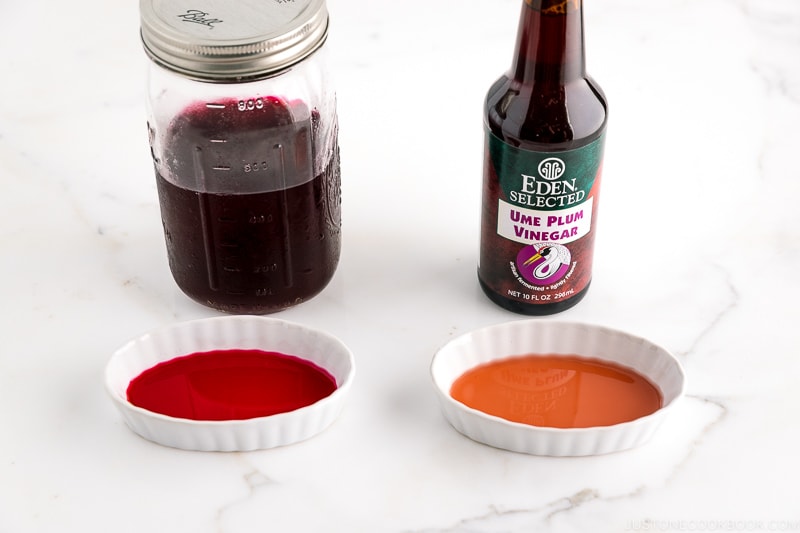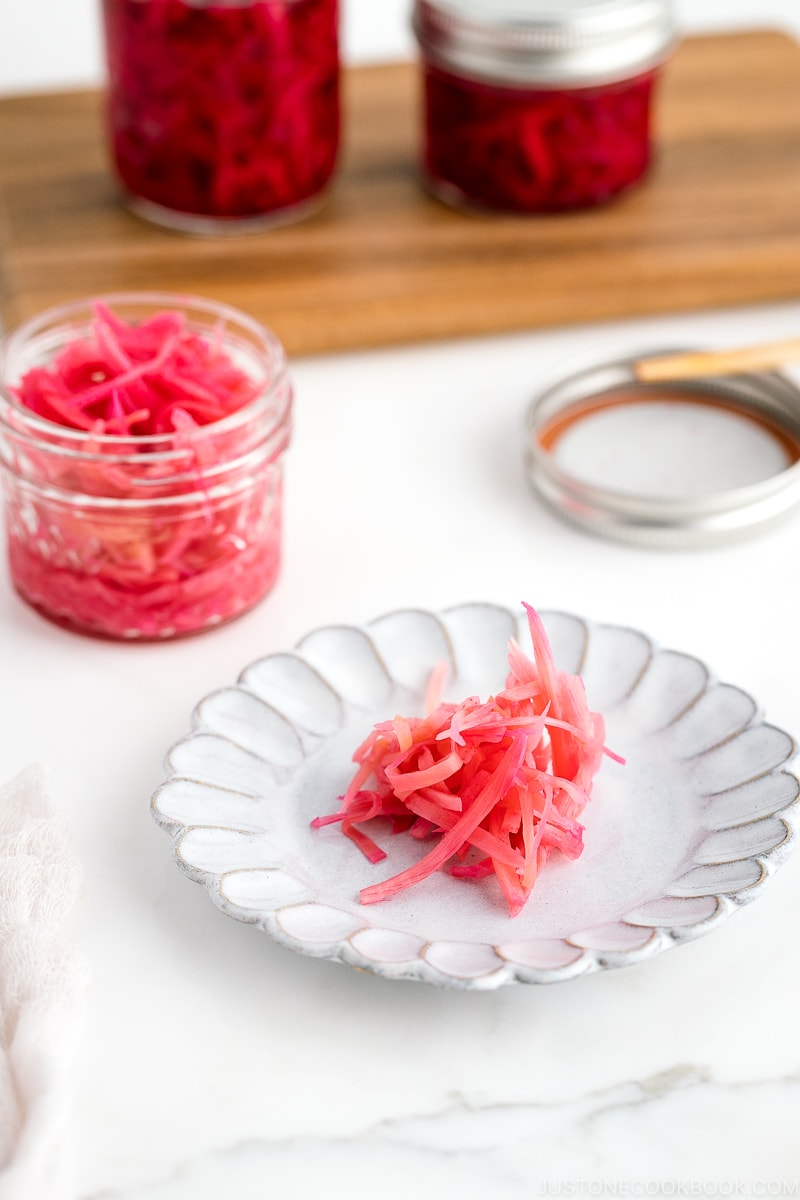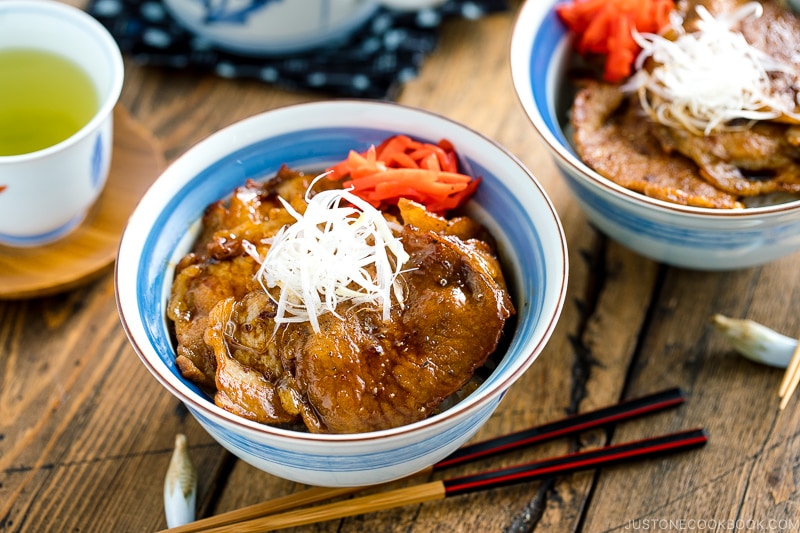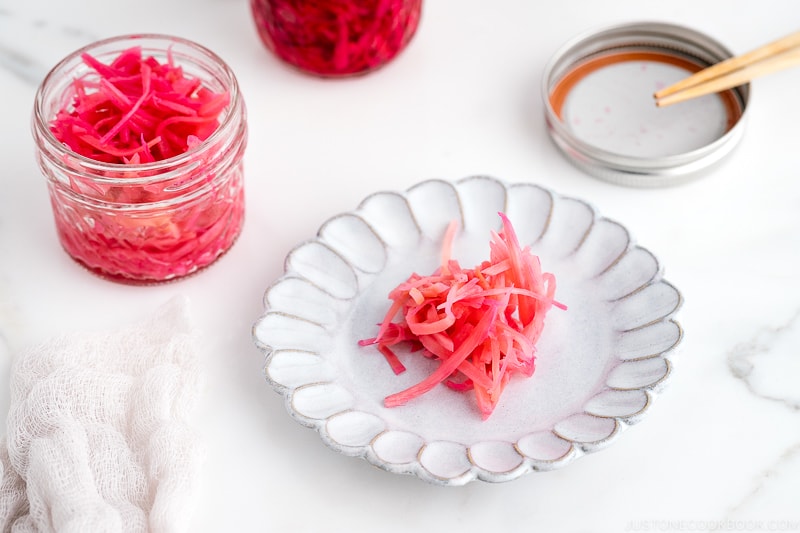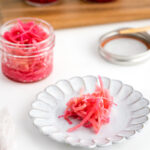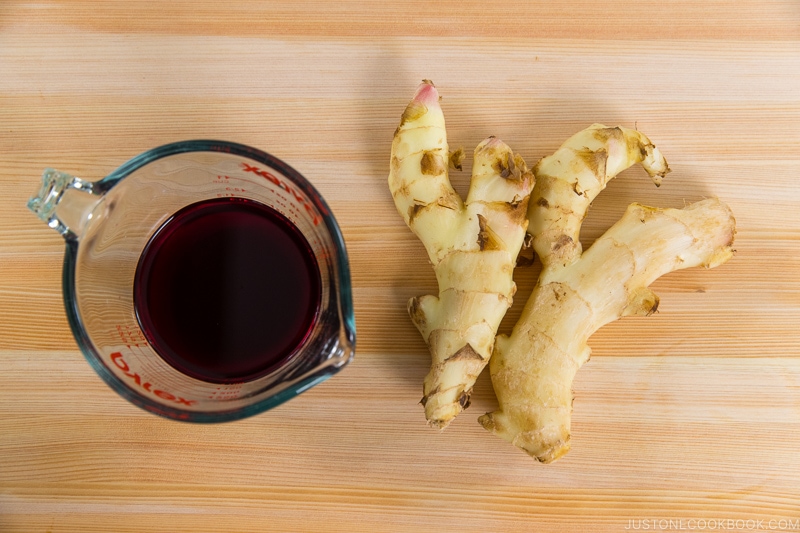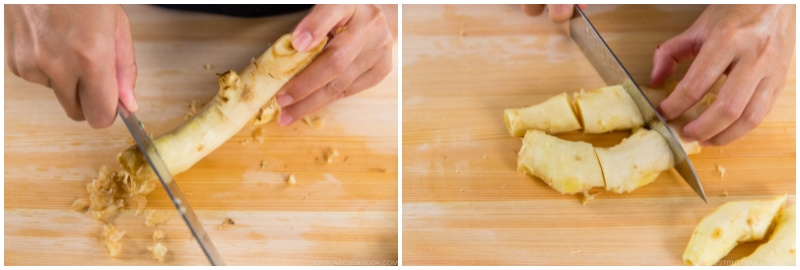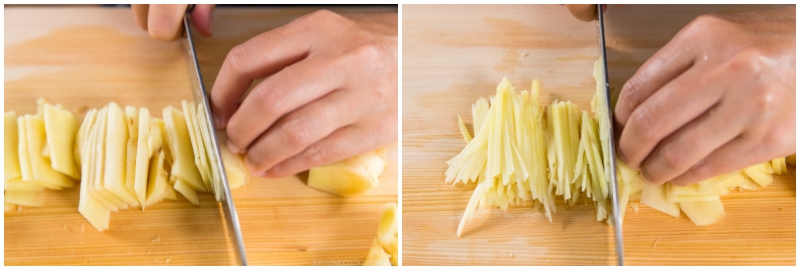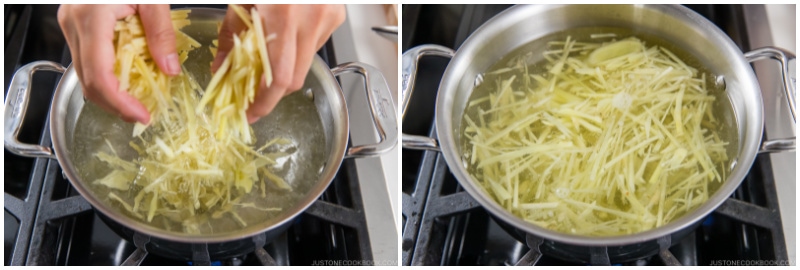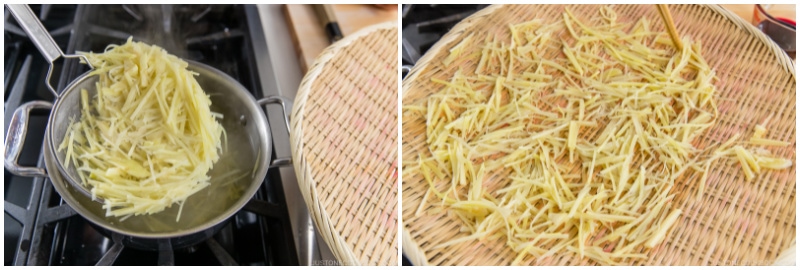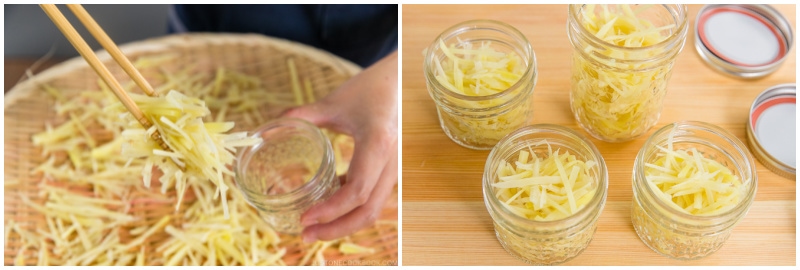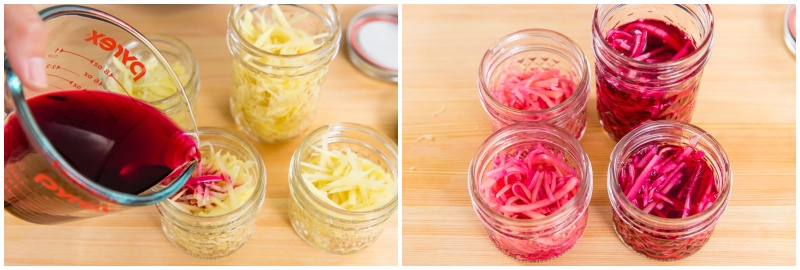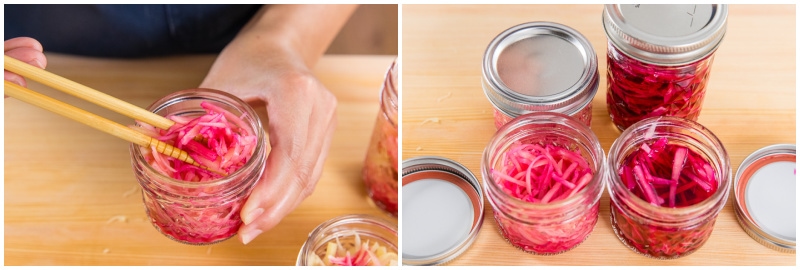Have you ever noticed the bright red, thin strips that often garnish yakisoba, takoyaki, and okonomiyaki in Japanese cooking? It’s a red pickled ginger that’s called beni shoga (紅生姜) in Japan. Irresistibly tangy and crisp, this topping offers a lovely contrasting bite to any crunchy or fried food. It’s an easy pickle to make, and it lasts for a year! Let me show you how to make it in my Beni Shoga recipe.
What is Beni Shoga?
Beni shoga, also known as red pickled ginger, is a type of Japanese pickle used as a garnish/condiment. The quick pickle is sometimes called kizami shoga (刻み生姜), as kizami or kizamu means to cut or chop. Thin strips of julienned young ginger are pickled in ume plum vinegar called umezu (梅酢). The bright red color comes from red perilla (shiso) leaves, or akashiso (赤紫蘇), that are used in the brine (see how it’s made in my Umeboshi post. Store-bought beni shoga often uses artificial coloring. If you enjoy making food from scratch, summer is the time to get your hands on young ginger as it’s only available then.
Beni Shoga vs. Gari
It’s easy to mistake beni shoga (red pickled ginger) for Gari (pickled sushi vinegar) as both are made with young ginger. But here are the differences:
Use: Beni shoga is typically served as a garnish or as an ingredient that goes with fried/grilled food or a hearty donburi rice bowl. On the other hand, gari is mainly served with sushi (and sometimes sashimi). Color: Beni shoga is bright red from plum vinegar while gari gets its light pink hue from sweet vinegar (amazu). Cut: Beni shoga is julienned into thin strips while gari is thinly sliced. Taste: Beni shoga has a tangy, sour flavor from the ume plum vinegar. Gari has a sweet and tangy flavor from a mixture of rice vinegar and sugar.
2 Ingredients You’ll Need
1. Young Ginger
Young ginger is tender and has a mild bite and flavor; it’s not as spicy as mature ginger. It’s in season during summer months. So keep an eye out early May through June at Japanese or Asian grocery stores. We also use young ginger to make pickled sushi ginger (gari). Both pickled gingers last for a year, so if you can grab a lot of young ginger, I highly recommend making a huge batch. They make such thoughtful homemade gifts, too!
2. Ume Plum Vinegar
That’s it! Only ginger and plum vinegar required. No additional salt is needed.
How to Make Beni Shoga
The preparation of these Japanese pickles is easy-breezy!
Tips on Making Delicious Beni Shoga
Use young ginger – It’s really important to use young ginger as it is tender in texture and mild in flavor. Regular ginger can be very fibrous and spicy. Use a tiny bit of ume plum vinegar – If you want to make it lighter red in color, use less ume plum vinegar and distribute a small amount of plum vinegar around the ginger. Use homemade ume plum vinegar – For those who are already making umeboshi, you’d want to reserve the ume plum vinegar from the process and use it for this quick pickle recipe. It’s like the fruit that keeps on giving as you expand the entire homemade treats.
How to Eat Pickled Red Ginger (Beni Shoga)
Pickled red ginger adds flavor and color to Japanese dishes and is often used as a garnish or palate cleanser between bites. You’ll see it being featured in these delicious Japanese recipes:
As a Garnish:
Yakisoba Takoyaki Gyudon Hiyashi Chuka (Cold Ramen) Yaki Udon Buta Don Hiroshima-Style Okonomiyaki
As an Ingredient:
Fried Rice Osaka-Style Okonomiyaki Tempura
Wish to learn more about Japanese cooking? Sign up for our free newsletter to receive cooking tips & recipe updates! And stay in touch with me on Facebook, Pinterest, YouTube, and Instagram.
